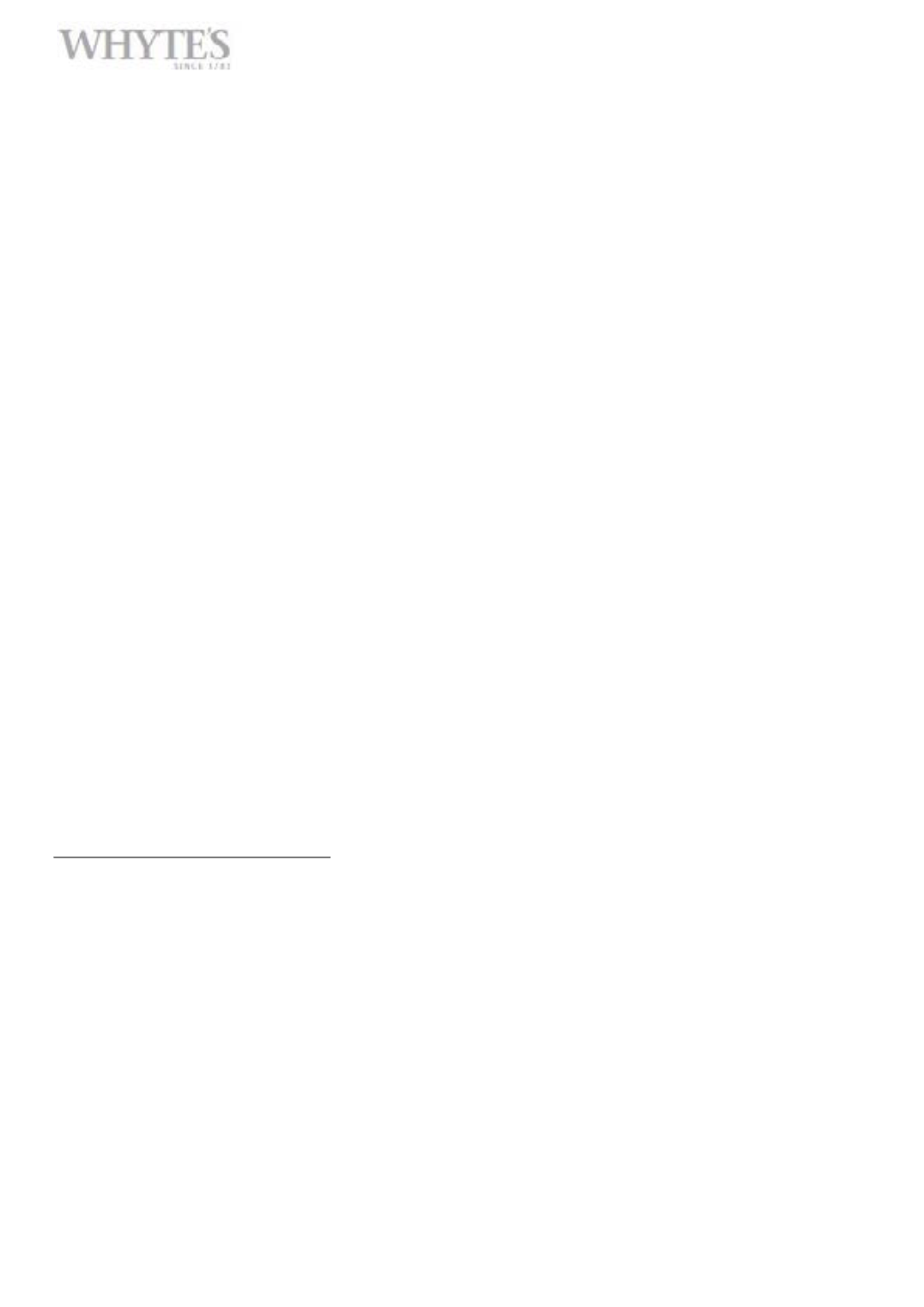

70
Louis le Brocquy HRHA (1916-2012)
BEING [734], 2000
oil on canvas
signed and dated [2000] on reverse
…my aim was to reach into their inner being, something merely suggested in the earlier works. From the start these
later works appear to have developed a certain granular surface structure covering the entire canvas. This surface
suggested particles, which I tended to see as another kind of matrix from which the image might materialise, both in the
depths of its shadow and in its emergence to the light. Then, gradually it seems, this granular structure becomes more
structured and pervasive, at once composing and disseminating the image within it. (2)For an example from the earlier
Presences series see lot 75. For further reading see,
www.anne-madden.comFootnotes:1. Mac Giolla Léith, Caoimhín ‘The
Human Image Paintings of Louis le Brocquy’, le Brocquy Archive, 20022. Louis le Brocquy quoted by Caoimhín Mac Giolla
Léith, ‘The Human Image Paintings of Louis le Brocquy’, Notes, le Brocquy Archive, 2002”
Gimpel Fils, London;Solomon Gallery, Dublin;Private collection
‘Human Images’, Gimpel Fils, London, 2001
Artist’s Archive number 734.From around the middle of the 1990s to 2005 Louis le Brocquy returned to his earlier
preoccupation with the ‘Presence Series’ (1956-1966) and developed further this theme in a body of work called ‘Human
Images’. Caoimhín Mac Giolla Léith has observed:
There are very few artists who have maintained as steadfast
a commitment as Louis le Brocquy has over the past half a century to envisioning what it is to be an embodied human
being adrift in an alienating world the true reality of which is likely to lie forever beyond our comprehension ... The
principal similarity between the early ‘Presences’ and the torsos produced since 1996, according to the artist, is one of
content in that the attempt is still to discover some kind of image of “our inner human reality - that impalpable thing we
call in turn the spirit, the psyche, consciousness.”The most obvious difference, on the other hand, between these two
bodies of work is one of form, in that the ‘phenomenon of whiteness’, to use Richard Kearney’s phrase, no longer exerts
the same fascination. In the recent [Human Image] paintings the intense white grounds have been replaced by what
le Brocquy characterises as ‘grayish backgrounds or ‘environments’, initially composed of minute particles and later by
a fractured texture from which the central figure is derived and into which it in turn diffuses in “a substantial identity of
surface and image”. (1)The artist described his return to the Presences theme thus:
€80000-€100000 (£57600-£72000 approx.)
Large Image & Place Bid Lot 70IMPORTANT IRISH ART · 30 November 2015



















